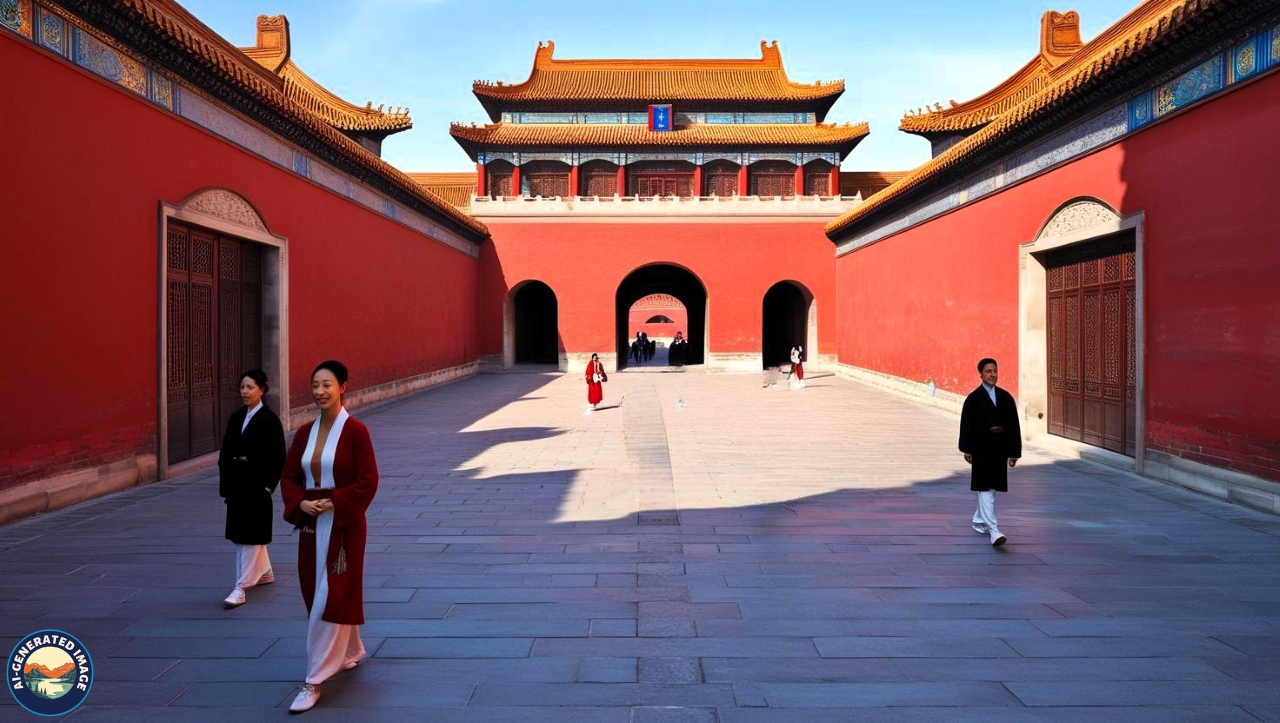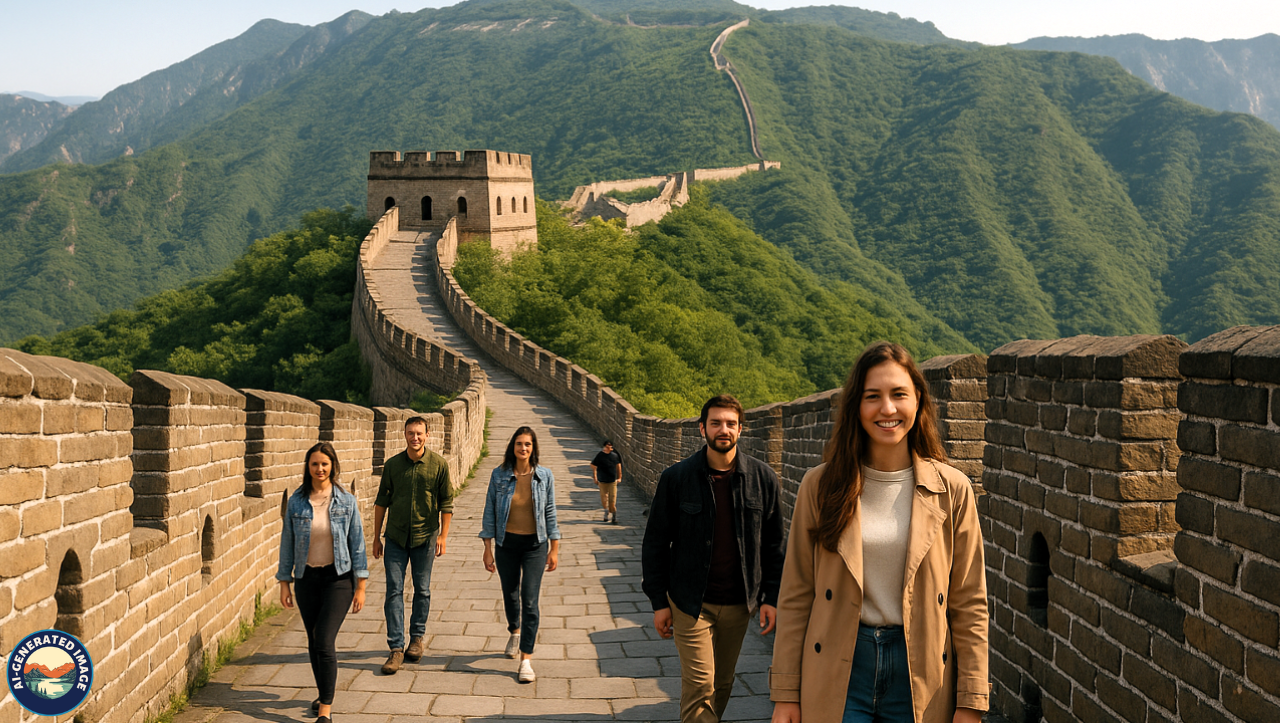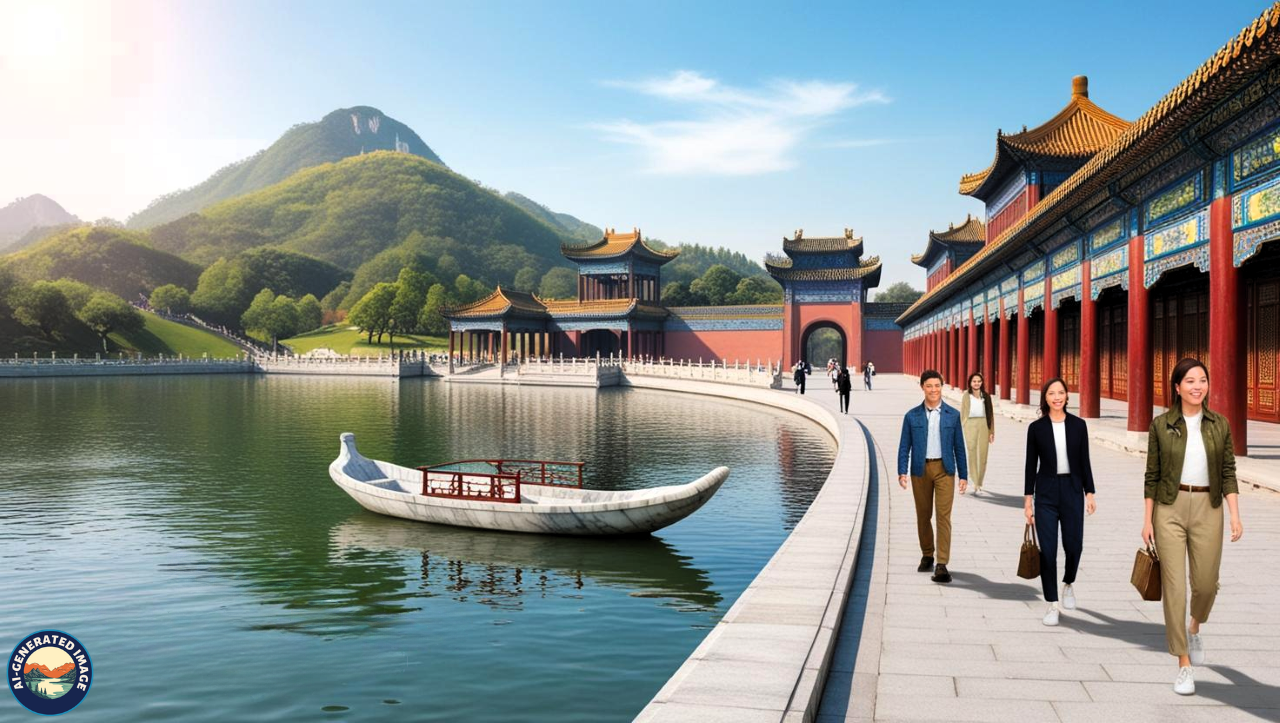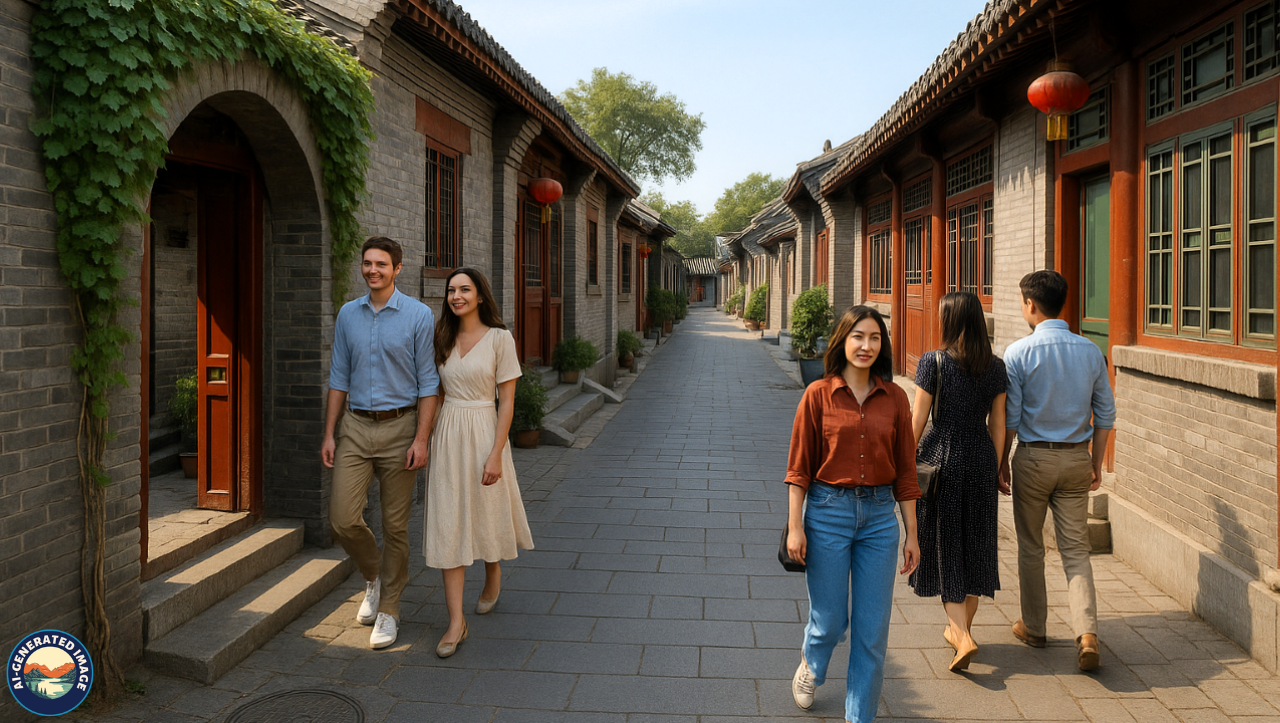Introduction
Beijing, the vibrant capital of China, is a city where the echoes of ancient dynasties harmoniously coexist with the rhythms of modern life. As the country’s political, cultural, and historical epicenter, Beijing presents a fascinating mix of the old and the new. From centuries-old temples and imperial palaces to innovative art districts and soaring skyscrapers, this city offers a deeply immersive experience of Chinese heritage and progress. Travelers arriving in Beijing will find themselves navigating through layers of history, tradition, and cutting-edge development — a rare and rewarding blend.
A Glimpse into Beijing’s Rich History
Beijing’s story begins more than 3,000 years ago, and for over 800 of those years, it has served as the capital under multiple dynasties, including the Yuan, Ming, and Qing. During the Mongol reign, it was known as Dadu, and in various other periods, it bore names such as Beiping. Each regime left architectural, cultural, and social imprints that are still visible today.
Since becoming the capital of the People’s Republic of China in 1949, Beijing has undergone profound transformation, but it has never abandoned its historical roots. Visitors can see this balance in the way ancient courtyards stand beside modern towers, and traditional customs are practiced within a rapidly developing society.
Top Attractions
The Forbidden City
The Forbidden City, also called the Palace Museum, was once home to China’s emperors. With nearly a thousand ancient buildings within its massive walled complex, it holds the title of the world’s largest imperial palace. The intricate woodwork, golden roofs, and expansive courtyards provide a window into the life of the imperial court.

Be sure to explore the Hall of Supreme Harmony, the throne room, and the beautiful imperial gardens. Wear comfortable footwear — this site takes time to explore thoroughly.
The Great Wall (Mutianyu & Badaling)
The Great Wall is one of humanity’s most astonishing architectural feats. Spanning thousands of kilometers, it symbolized both protection and prestige. The Badaling section is well-preserved and easier to access, while Mutianyu offers fewer crowds and breathtaking landscapes. Cable cars and toboggan rides are available at both sites.

A day trip here provides not just historical insight but also memorable views of China’s mountainous terrain.
Tiananmen Square
Tiananmen Square is a place of national pride and historical reflection. It is flanked by important structures like the Great Hall of the People, the National Museum of China, and Mao Zedong’s Mausoleum. The square can host over a million people and is a central spot for major national events.
Visiting early in the morning for the flag-raising ceremony can offer a patriotic experience unique to this location.
Summer Palace
This former imperial retreat is celebrated for its gardens, lakes, and classical Chinese architecture. Highlights include Kunming Lake, the Long Corridor adorned with vivid paintings, and the marble boat pavilion. Boat rides are available, and a climb up Longevity Hill offers fantastic panoramic views.

Temple of Heaven
Built in the 15th century, this temple complex served as a ceremonial site where emperors prayed for good harvests. Its architecture and layout reflect cosmic harmony, symbolizing the connection between earth and heaven. The surrounding park is filled with locals practicing tai chi, singing, and dancing.

Lama Temple (Yonghe Temple)
This richly decorated Tibetan Buddhist temple is among the most beautiful and peaceful places in the city. Its halls are filled with intricate sculptures, and the centerpiece is a towering statue carved from a single piece of sandalwood.

The scent of incense and the gentle chants of monks make this a deeply spiritual site.
Hutongs and Courtyards (Siheyuan)
Beijing’s hutongs — narrow lanes lined with courtyard homes — offer a glimpse into traditional life. While many have disappeared due to modernization, those in areas like Nanluoguxiang are preserved and thriving. Exploring these neighborhoods on foot or by rickshaw provides an authentic taste of Old Beijing.

Modern Beijing: A City of Innovation
Central Business District (CBD)
This part of Beijing showcases its modern face, filled with futuristic buildings and high-end facilities. Iconic structures like the CCTV Headquarters highlight the city’s architectural ambition. The CBD is home to multinational offices, upscale malls, and fine-dining restaurants, reflecting Beijing’s globalized identity.
Olympic Green
Built for the 2008 Olympics, this area is home to architectural icons such as the Bird’s Nest Stadium and the Water Cube. It remains a popular destination for both domestic and international tourists. At night, the structures are illuminated, making for a striking visual treat.
798 Art District
Located in a former factory zone, this district is now a thriving hub for contemporary art. Galleries, cafes, street murals, and design boutiques line the area, making it an exciting stop for anyone interested in Beijing’s creative pulse. Events, performances, and exhibitions are held regularly.
Cultural Experiences
Peking Opera
This traditional art form combines music, elaborate makeup, acrobatics, and storytelling. Venues like Liyuan Theatre allow audiences to experience this dramatic spectacle, often with English subtitles. Even without understanding the language, the expressive performances are visually captivating.
Traditional Workshops
Participating in calligraphy sessions, tea tastings, or paper-cutting demonstrations adds a hands-on dimension to your visit. These activities are often offered at cultural centers, museums, or even within hutong communities.
Traditional Chinese Medicine (TCM)
For those interested in holistic health, Beijing offers many TCM clinics and hospitals. Treatments such as acupuncture, cupping, and herbal remedies are available, often accompanied by detailed diagnosis methods that have been passed down through generations.
Beijing’s Culinary Scene
Signature Dishes
-
Peking Duck:
-
This crispy, aromatic dish is carved tableside and served with thin pancakes and sweet sauce.
-
Dumplings (Jiaozi):
-
A staple in northern China, these are available steamed, boiled, or fried with various fillings.
-
Zhajiangmian:
-
Thick noodles topped with a savory soybean-based sauce and fresh vegetables.
-
Street skewers and candied fruit:
-
Common at night markets and street food alleys.
Where to Dine
-
Quanjude:
-
Known for classic Peking Duck.
-
Da Dong:
-
Offers a modern take on traditional flavors.
-
Wangfujing Street:
-
A street food heaven for the adventurous eater.
-
Ghost Street:
-
A late-night destination filled with hotpot restaurants and Sichuan eateries.
Special Diet Options
Beijing is accommodating to diverse diets. Vegetarian eateries like King’s Joy offer refined cuisine using organic ingredients. In the Niujie area, one can find excellent Halal dishes prepared by the local Hui Muslim community.
Shopping
Local Markets
-
Panjiayuan Market:
-
Ideal for antiques, art, and handmade items.
-
Silk Street:
-
Famous for fabrics and bargaining opportunities.
Modern Shopping Centers
-
Sanlitun:
-
Popular among youth and expats for its trendy boutiques.
-
China World Mall:
-
Houses luxury brands and international labels.
Souvenir Suggestions
Take home unique items like painted fans, traditional scrolls, cloisonné vases, silk scarves, or loose-leaf tea varieties from specialty stores.
Getting Around Beijing
Subway System
Efficient and budget-friendly, the subway covers most tourist sites. Maps and announcements are available in English. A prepaid travel card (Yikatong) simplifies multiple rides.
Taxis and Buses
Taxis are widely available but often don’t have English-speaking drivers — carry a hotel card with the address written in Chinese. Buses offer broad coverage but can be tricky without Mandarin skills.
Travel Tips
-
Language:
-
Basic phrases or translation apps are useful.
-
Connectivity:
-
Buy a SIM card or rent a portable Wi-Fi device.
-
Payments:
-
While mobile payments are dominant, most places accept cash and international cards.
Ideal Seasons to Visit
Spring (April–May)
Mild weather and blooming flowers make this season ideal for sightseeing.
Autumn (September–October)
Clear skies, cooler temperatures, and golden leaves offer perfect conditions for exploring.
Summer (June–August)
Busy with local tourists; expect heat and occasional rain.
Winter (November–February)
Cold but less crowded — a great time for travelers who prefer quiet and cheaper stays.
Day Excursions from Beijing
Ming Tombs
About an hour from the city, this area houses the mausoleums of Ming emperors. The Sacred Way, lined with stone figures, leads to the tombs and provides a scenic walk.
Chengde Resort
This imperial retreat offers a cooler climate and expansive gardens, ideal for a summer day trip. The site also features Tibetan-style temples.
Cuandixia Village
Famous for its well-preserved Ming-era architecture, this mountain village provides a window into rural life. Homestays and local meals add to the authentic experience.
Responsible Travel Tips
-
Dress respectfully in temples and historical sites.
-
Refrain from touching artifacts or stepping on monuments.
-
Support family-run businesses and local artisans.
-
Choose eco-friendly accommodations and reduce plastic usage.
-
Be considerate when photographing people — ask permission when possible.
Conclusion
Beijing is more than a capital city — it’s a living legacy of China’s past, present, and future. With its majestic monuments, deeply rooted traditions, and ever-evolving skyline, it offers travelers a complete cultural experience. From walking along the ancient Great Wall to sipping artisanal coffee in a modern art café, each moment in Beijing is layered with discovery. For those seeking history, innovation, and genuine human stories, this city delivers in every sense.
FAQs
Is Beijing safe for visitors?
Yes, Beijing is known for being one of the safest large cities in Asia. Standard precautions are recommended.
Is English commonly spoken?
While not universal, English is spoken in most tourist areas. Carrying a translation app helps immensely.
What’s the currency?
The Chinese Yuan (RMB). Use cash, cards, or mobile apps like WeChat Pay.
How long should I stay in Beijing?
A 4 to 5-day trip allows enough time to see major attractions and enjoy cultural activities.
Do I need a visa?
Most nationalities require a visa unless entering on a 72 or 144-hour visa-free transit policy.
Can I do a day trip to the Great Wall?
Yes, both Badaling and Mutianyu sections are perfect for one-day excursions.
What about pollution and air quality?
Air quality has improved, but occasional smog occurs. Checking forecasts and carrying a mask is advised.
What etiquette should I follow?
Avoid loud behavior in sacred places, dress modestly in temples, and be polite in public interactions.

